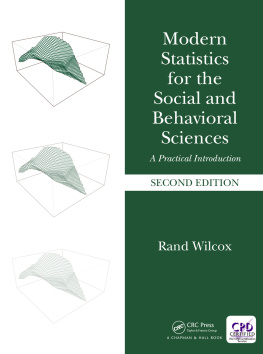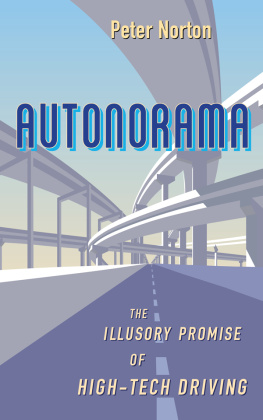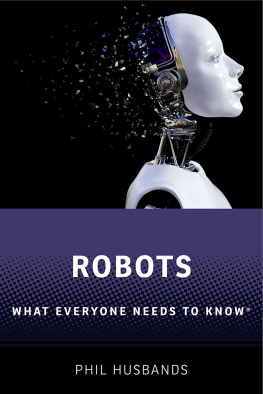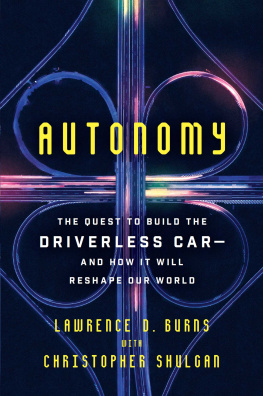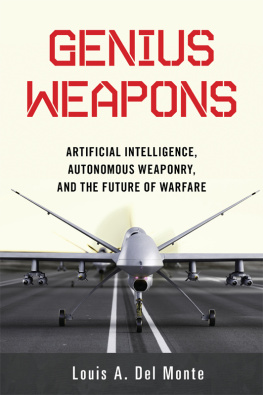New Degree Press
Copyright 2020 Phillip Wilcox
All rights reserved.
The Future is Autonomous:
The US and China Race to Develop the Driverless Car
ISBN 978-1-63676-618-8 Paperback
978-1-63676-292-0 Kindle Ebook
978-1-63676-293-7 Ebook
Contents
Dedication
This book is dedicated to my mom, whose love and support have been invaluable both in writing this book and for my development as a person. To my father, who taught me the importance of working hard in pursuit of your passions. To Simon Radford, without whom I would not be here today because he was the one that saved me after my accident.
Thank you to everyone I interviewed for this book, some of whom have asked to remain anonymous. Your valuable insights were crucial for this book.
Part 1:
Introduction to Autonomous Vehicles and Their Benefits
Chapter 1
Introduction
Over fifty-three million Americans watched the grainy, black-and-white footage of the Apollo 11 lunar landing vessel as it landed on the moon on July 20,1969. Neil Armstrong emerged from the vessel, floated down to the moons surface, and said one of the most famous sentences ever recorded: Thats one small step for man, one giant leap for mankind.
The lunar landing occurred during one of the tensest periods of the intercontinental rivalry between the US and the Soviet Union. Both countries invested huge amounts of money in their respective space programs with the goal to send humans to the moon. The Soviet Union was the first country to send a satellite, Sputnik 1, to orbit Earth on October 4, 1957.
The Soviet Union launching Sputnik has since been referred to as the Sputnik moment for the US. This moment, and the following string of successes by the Soviet Union, signaled a challenge to the US. The US drastically increased the funding and focus of NASA on a mission to be the first country to send a rocket with humans to the moon. The space race between the US and the Soviet Union represented, more than anything, a battle for global technological supremacy.
Now there is a new battle between the US and China. This time, the US could lose if it doesnt get more serious about autonomous vehicles as a key technology. Driving a vehicle is one of the most complex human activities. Developing the automated driving system which can drive these vehicles safer than humans represents a monumental undertaking. Other than the vehicles themselves, the core machine learning technology which allows them to function has virtually limitless applications. The technology has already been used for things like educational aids, medical equipment, agriculture, mining, and in the military for things like drones. There also needs to be policy enacted to support this effort.
A keen understanding of the political process in both countries is critical to understand the public-private partnerships which fuel new technology developments for companies in each country. Governments can spur a new technologys advancement, as in the case of China under Xi Jinping. It can also set up roadblocks that hinder its development, as in the case of the US. I have fifteen years of experience researching and analyzing the political process in the US and how it leads to foreign and domestic policy. I also have ten years of experience researching Chinese foreign and domestic policy, US-China relations, and Mandarin Chinese.
The inability of Congress to pass a comprehensive law governing autonomous vehicles that creates uniform safety standards, the Trump administrations tech neutral approach to transportation management, and agency infighting threaten to grind autonomous vehicle development to a halt. Drivers are regulated at the state level in the US for things such as vehicle licensing, registration, insurance, and liability. The vehicles themselves are regulated at the national level through the Department of Transportations Federal Motor Vehicle Safety Standards (FMVSS.) Therefore, autonomous vehicle companies would need legislation passed at two levels in order to drive on public roads.
Beyond these legislative barriers, companies need to develop new business models so autonomous vehicles will be profitable. Because of increased Research & Development (R&D) and technology costs, these vehicles cost more to develop and produce. There is also an issue of public trust in this new technology in the US. These issues still exist to a certain extent in China. However, China is able to more easily manage these issues. Because of this, China could speed ahead and win the race.
Ultimately, the need for a safer vehicular transportation system is vital. Over 1.35 million people die in traffic related accidents every year around the world. Many more people are injured. Of these accidents, an estimated ninety-four percent can be attributed to human error, such as speeding, fatigue, or drunk and distracted driving. This book examines the ways in which companies in the US and China strive to create safer vehicles to make the roads a better, safer place.
In 2012, while I was studying for my PhD in the Politics and International Relations Program at the University of Southern California, I suffered near fatal injuries as the result of a fall from three stories. My spleen was severely damaged in the fall and had to be removed. Both my wrists were severely broken. Because I suffered massive head trauma, the optic nerve in my left eye was completely destroyed and there was partial damage to my right optic nerve, causing slight tunnel vision.
In my recovery process, I learned about new technological advances to help people with vision difficulties. One of these devices is the Kurzweil program which reads digital articles or books to me. This program allowed me to return to my graduate program two years after my accident to research and write my MA thesis. This allowed me to graduate with an MA in international relations. I have also been using this program to conduct research for this book.
I continue to find new ways to manage my life as someone with vision difficulties, such as scanning my surroundings closely whenever I am walking in public. This allows me to make sure that I do not fall or bump into someone. I have become reliant on public transportation. Because of this, I was unable to see my dad for six months when DC closed the metro. I take to travel to DC due to the COVID-19 pandemic. I was unable to see him, even though he only lives roughly seventeen miles away. I feel blessed my injuries were not much worse, however, and that I am still alive.
Chinese companies and national and local governments have invested heavily in New Infrastructure projects. These projects include things like smart stoplights and roadside cameras can help autonomous vehicles communicate with the road infrastructure and other connected vehicles. This communication reduces traffic congestion and increases the vehicles safety. Investment in Chinas smart cities is expected to reach thirty-nine billion dollars by 2023.







